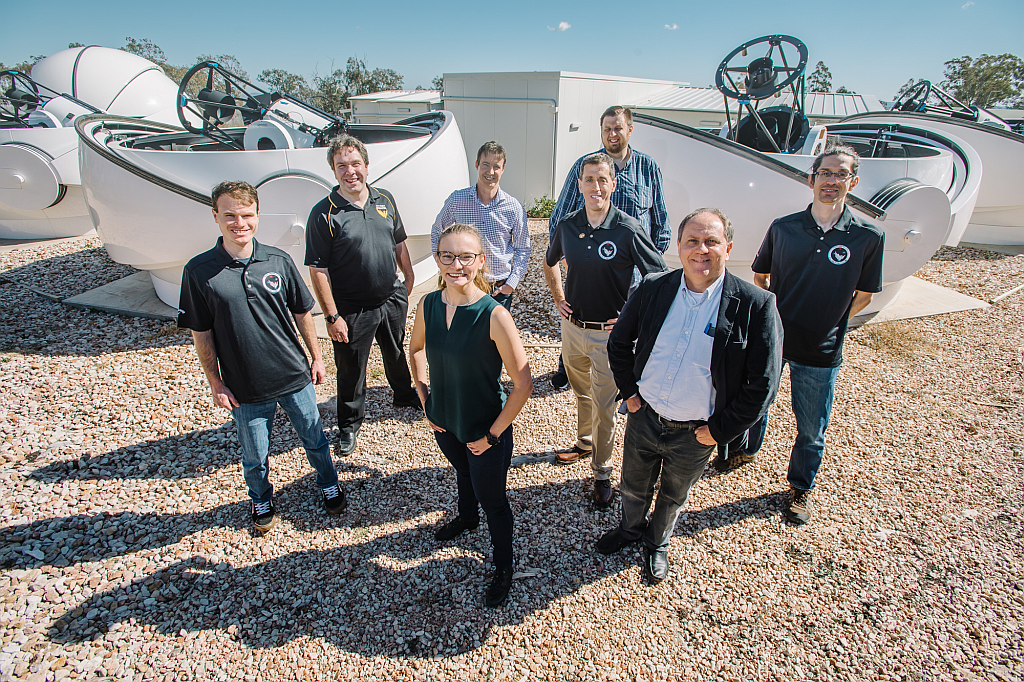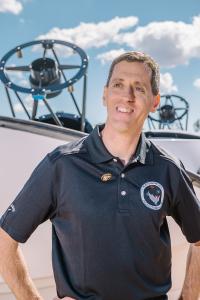We have lift-off:ÂÂ
As the world celebrated 50 years since the Moon landing, at the University of Southern Queensland (USQ), eyes are firmly set on the future of space exploration.


Tuesday July 23 saw the completion of Minerva-Australis at USQ’s Mount Kent Observatory, the only facility in the Southern Hemisphere dedicated to providing ground-based observations to support NASA’s Transiting Exoplanet Survey Satellite (TESS) mission.
USQ Astrophysicist and project lead Professor Rob Wittenmyer said the telescope array offered a powerful new approach to planet hunting. “Fifty years ago we walked on the Moon, 30 years ago we found the first planets orbiting other stars and we are now in the new space race †the search for habitable planets.â€Â
“In the next few years NASA’s TESS spacecraft should detect thousands of new worlds, but ground-based facilities are critically needed to follow-up those discoveries, and to help us understand what kind of planets they might be,” Professor Wittenmyer said.
“This is where Minerva-Australis comes in. We are the only dedicated facility in the Southern Hemisphere for this kind of work. We can observe the stars around which TESS suspected planets and confirm the existence of those planets and learn more about them.
“That makes us a vital piece of the puzzle – without our facility, many of the planets TESS finds would remain unconfirmed, and uncharacterised.â€Â
Minerva stands for Miniature Exoplanet Radial Velocity Array, a group of 70cm aperture robotic telescopes that search for Earth-like exoplanets near our Solar system, within about 300 light-years of the Sun.
The observatory on Toowoomba’s doorstep is already playing a pivotal role in the universal hunt, assisting in the discovery of thirteen new planets orbiting distant stars. Mount Kent Observatory is Queensland’s only professional research observatory for astronomy teaching and research training, and this year USQ is offering a Bachelor of Science (Astronomical and Space Sciences) degree for the first time.
USQ Vice-Chancellor Professor Geraldine Mackenzie said the degree would open more doors for students and allow them to work alongside leading researchers and access world-class facilities like Mount Kent Observatory.
“This Minerva-Australis telescope array and the Mount Kent Observatory will provide students with state-of-the-art telescopes and instruments and give them the opportunity to be a part of the international quest to understand nearby planetary systems,†Professor Mackenzie said.
For more information visit: www.usq.edu.au/research/astrophysics/new-planets.
Minerva-Australis is supported by Australian Research Council LIEF Grant LE160100001, Discovery Grant DP180100972, Mount Cuba Astronomical Foundation, and institutional partners the University of Southern Queensland, UNSW Australia, MIT, Nanjing University, George Mason University, the University of Louisville, the University of California Riverside, and the University of Texas at Austin.

Submitted by:
Sarah Green
E : sarah.green@usq.edu.au

